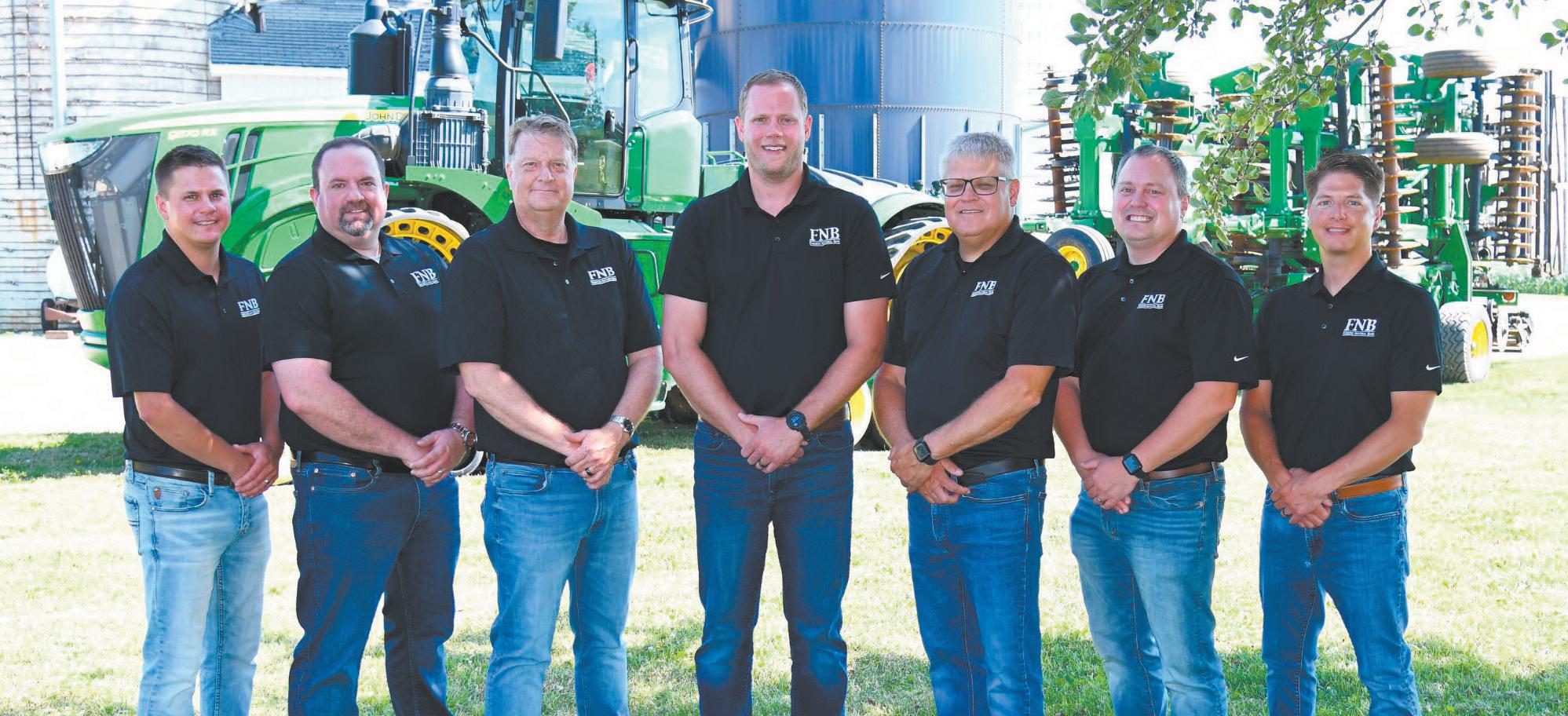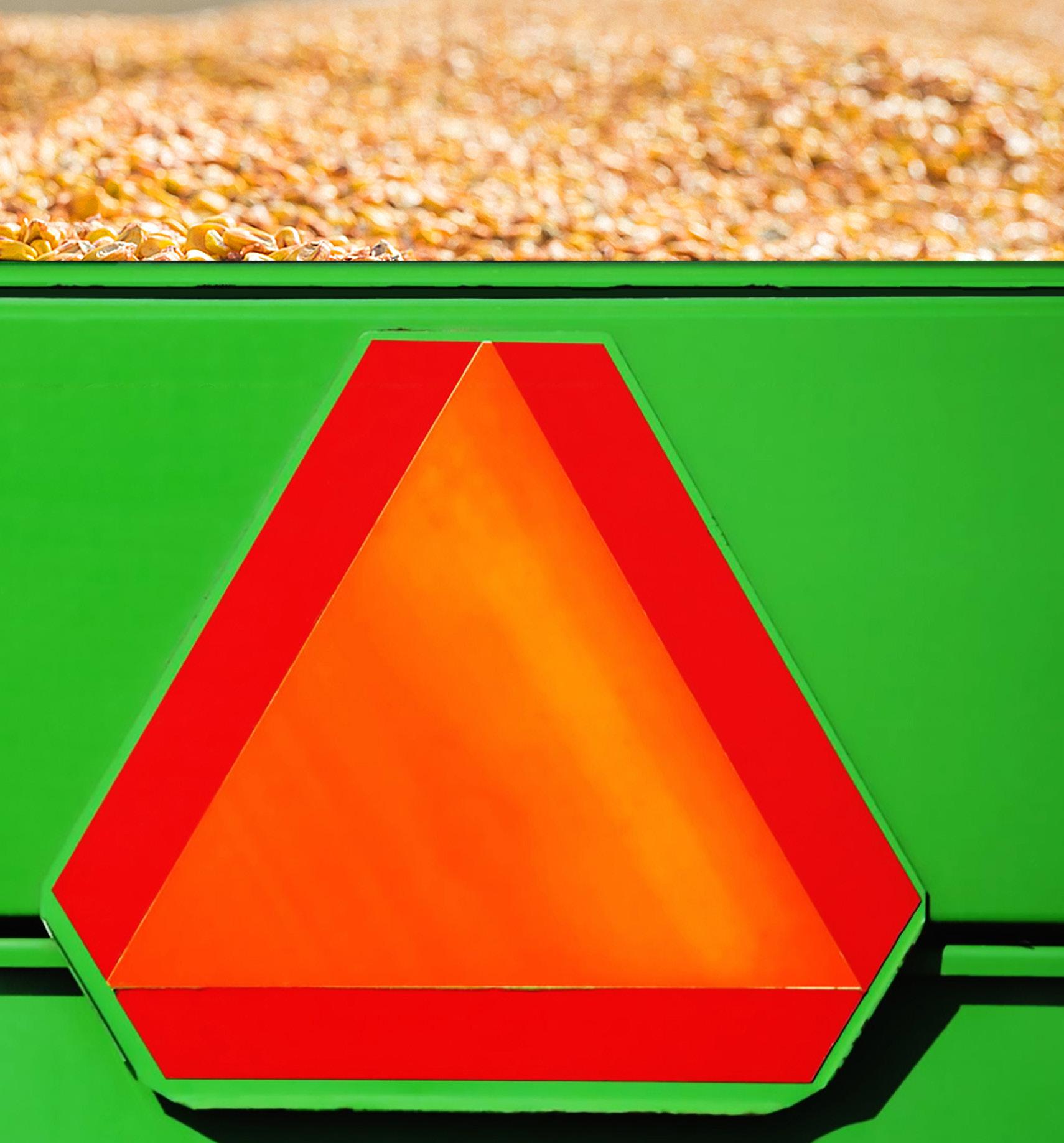

TODAY’S FARM
Climbing on the bandwidth wagon
Industry Electronics Foundation (AEF), which works on the interoperability of farm equipment of all brands. He is on a committee looking at road safety.
In the incident with the tractor, the car passed on the left shoulder and everything turned out fine, but not until after a few tense seconds — but an early warning system would have helped avoid the near miss.
By PHYLLIS COULTER FarmWeek
A farmer driving a tractor to the Farm Progress Show in August was on a two-lane road, with two wheels off the shoulder while towing a 17.5-foot-wide strip-till machine in transport mode, when he came upon a car parked at the side of the road.
He signaled, waited for a beat, and started moving into the left lane to avoid the parked car. Unfortunately, he couldn’t see that two cars behind; a passenger car was pulling out to pass both a car and the tractor.
If only there was a way to warn the car driver of danger.
Thanks to new advancements in technology, there is: A system that would allow vehicles to talk to each other — and say, “Hey! Look out!”
All it would take for the system to catch on the U.S. is a commitment to the cause, and some bandwidth.
Technology utilizing the Intelligent Transport System, oneM2M, and ISOBUS systems (a standardized communication protocol that enables tractors and farm implements from different manufacturers to communicate) would allow the broadcast of a warning message from farm equipment to nearby vehicles on the road.
The technology is already used in Europe for equipment to send a warning signal to other motorists, but its availability is limited in the U.S., said Johann Witte, head of advanced development for ag equipment manufacturer CLAAS and a volunteer for the Agricultural
Speaking of his motivation to study how radio technology could be used in road safety, Witte said, “University research showed the number of accidents between farm equipment and other vehicles was quite low. But when an accident happened, it was bad. If an accident involved ag equipment, more people were killed or injured than in motorcycle accidents,” Witte told FarmWeek, speaking from CLAAS headquarters in Germany.
On-board communication tools can deliver realtime traffic information, react to changing road conditions and warn of danger ahead. To make such on-theroad communications possible, a “safety band” is needed: room on the wireless spectrum of 5.9 GHz, reserved for transportation-related communications among the devices that support connected and automated vehicles. The advantage is that it doesn’t require Wi-Fi and cell towers, which is particularly useful where there is poor rural conductivity, said Andrew Olliver, AEF’s chairman.
In Europe, where more of the usable band is available, 1.2 million vehicles on the road have this capability, but few do in the U.S. Volkswagen has already built more than a million cars equipped with radio technology, enabling them to communicate with other similarly equipped vehicles in Europe.
There is little safety band available in the U.S., but enough to make it work, Witte said.
Banding together
Road safety is only part of the efforts of AEF, founded in 2008 by seven agricultural equipment manufacturers and two trade associations to volunteer their time


and resources to resolve farmers’ compatibility issues among different brands. The original companies were John Deere, Kubota, CNH, CLAAS, AGCO, Pottinger, and Kuhn, and the two associations were the Association of Equipment Manufacturers and the German Engineering Federation.
Today, AEF has grown to include more than 300 ag business-related companies and universities developing communication and interfacing between electronic systems of different ag machinery from independent manufacturers. With interoperability, a grain cart, multiple combines or a variety of ag machinery will sense where the other one has been and where it is going.
Such communications allow two tractors of different brands working together in a field during planting time to communicate. It also allows for the combine operator to control a grain cart of a different brand to travel at the same speed and unload, Olliver said.
“The strength of AEF is to create a standard of interoperability of farm equipment to benefit farmers, dealers and society,” said Olliver, also CNH’s global precision technology partner manager. The manufacturers work together to improve features that make life easier, he told FarmWeek, speaking from an ag equipment conference in Argentina.
AEF enhances existing features and works with equipment at different levels of autonomy, allowing them to be controlled by less-skilled operators, Olliver said. The organization is also making information stored in the cloud available in a standardized network usable among manufacturers.
This interoperability among equipment is not something far off into the future. “These things are achievable now. They are just around the corner,” Olliver said.
This story was distributed through a cooperative project between Illinois Farm Bureau and the Illinois Press Association. For more food and farming news, visit FarmWeekNow.com.






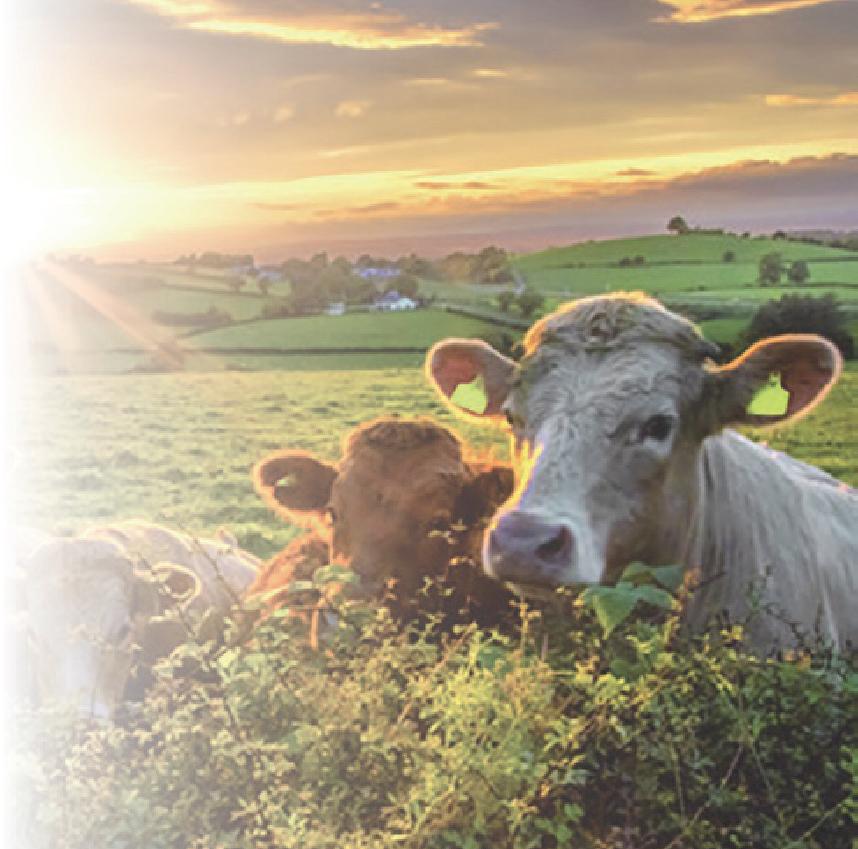
TODAY’S FARM
One giant leap for unmanned kind
Businesses have built a booming industry from the ground up, flying drones over fields and farms
SCOTT ANDERSON | SHAW MEDIA
sanderson@shawmedia.com
Each summer, the skies above farm fields are dotted with planes buzzing over crops and dodging power lines, spraying pesticides, herbicides and fungicides.
Recently though, they’ve had some company, but there haven’t been any pilots in the driver’s seat. That’s because there is no driver’s seat.
Unmanned aerial vehicles, more commonly known as drones, have been gaining ground in the ag industry in recent years, popping up and dropping in on farms around the world, including in northern Illinois.
According to the International Food Policy Research Institute, the number of agricultural drones registered with the FAA in the U.S. jumped from 1,000
in January 2024 to almost 5,500 in July 2025. Around the world, an estimated 250,000 agricultural drones are employed in China, 20,000 in Japan, 12,000 in Brazil, and 8,000 in South Korea, to name just a few countries where they’re being used.
The drones offer a number of options for farms, including mapping and monitoring fields, applying pesticides, insecticides, herbicides, fertilizers, or other crop treatments with precision and accuracy.
Mike Pack, drone operator at Sun Ag Inc. in McNabb, about an hour south of the Sauk Valley, uses a DJ Agras T40 that combines mapping, spraying and spreading functions, while using a high-definition camera and adjustable gimbal to capture the desired views of the fields.
DRONES cont’d to page 22







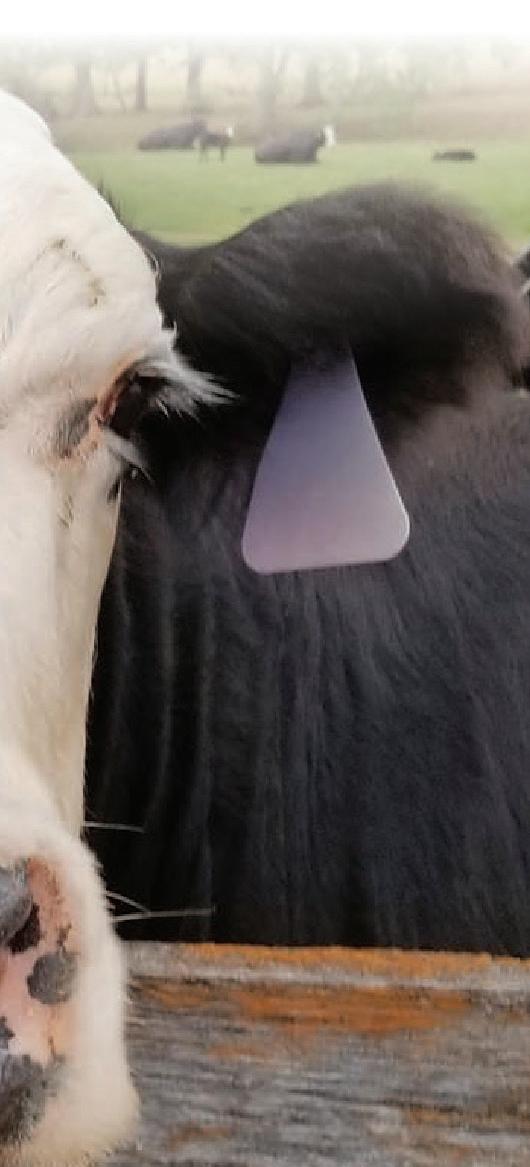


Tyce Barkman of Sweetwater Technologies inserts a new battery into a DJ Agras T40 drone Aug. 6 as Brodie Jagers fills its tank with DroneZone, a product containing fungicide, insecticide, and herbicide on a farm outside of Amboy. Farm drones can provide more accurate and precise aerial application than the average crop duster.

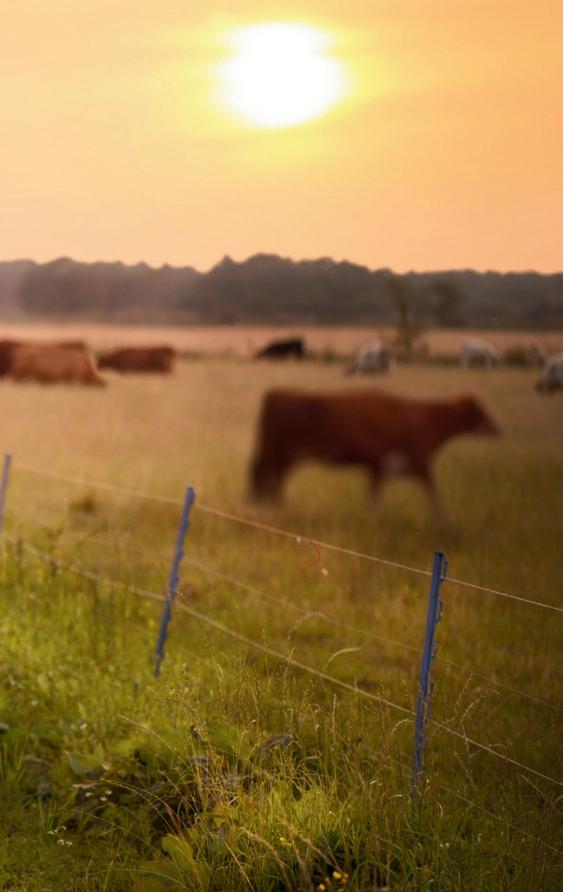




Scott Anderson/Shaw Media
TODAY’S FARM
Storyteller, collector, museum director
n How did a retired Bureau County farmer turn his field of expertise into a living history
By TAMMIE SLOUP FarmWeek
WALNUT — Alan Dale didn’t have many toys growing up on his family’s farm. Maybe a few trucks he pushed around in the dirt and left outside to rust.
But he’s making up for it today.
The retired Bureau County farmer has amassed a collection of more than 1,300 vintage toys, including tractors, farm equipment, trucks, pedal tractors and more — each one photographed and catalogued by his granddaughter, Gracelynn Dale, and displayed in a refurbished garage and his Walnut home’s breezeway.
Complementing the toys are historical farm items, including more than 70 companies’ seed sacks dating back to the 1940s, cast iron tractor seats, a 1925
cont’d from page 21 Online
“The drone has a 10-gallon tank and can provide two gallons of coverage per acre,” said Pack. “The operation is fully programmable and it will fly and spray by itself.“
Battery life can be a hindrance, however, as the unit only has a seven-minute flight time.
“Remote pilots need to constantly keep batteries charged and have an abundance of them,” Pack said.
Ag companies with drones need to have trained professionals, and remote pilots must pass the Federal Aviation Administration exams that govern the use of aircraft, including drones, to dispense or spray substances. While remote pilots are exempt from some rules that don’t apply to unmanned aircraft, the FAA certificate is the same.
The remote pilots are also licensed aerial pesticide applicators through the Illinois Department of Agriculture and must be insured.
Silas Steiner went into the spray
Sweetwater Technologies — sweetwatertechnologies.com/ Sun Ag — sunagservices.com/ Thrive — thriveagco.com/
drone business in 2023 while launching his company Thrive, located in El Paso, in central Illinois. The company is a precision ag company offering drone application services, business development for drone operators, and custom-formulated drone-specific products.
Steiner has always been passionate about agriculture and fascinated by the growing industry of precision technology using drones. He said that while he doesn’t think the current technology will replace the airplane, it is much safer.
“While drones have and will keep getting bigger and faster, it takes a fleet of drones to be able to spray as many acres as a single airplane or helicopter can in a single day,” Steiner said. “Unmanned aircraft have their advantages, such as when it comes to getting closer to tree
Country Mutual Fire Co. clock (that still works), and farm tools from the 1800s.
While creating a museum didn’t fully start taking shape in Dale’s mind until about 1996, the seed was planted decades ago when he tore down the corn crib on his property in 1987.
“I saved the ladder from the corn crib and I figured I’d use that someday. So I had these visions, dreams, many years ago,” he said.
After giving a tour to about eight tractor enthusiasts on a recent morn -
lines, power lines and any other obstacles that may be in or border a field. Drones are also a much safer option. While we still have to be cautious when landing and filling the drones there is little risk of a pilot getting hurt during the operation.”
Tyce Barkman, an employee at SweetWater Technologies — a full-service drone application and business development company in Wyanet, in Bureau

ing, he opened his museum doors to FarmWeek. The 26-by-26-foot main space isn’t terribly large, but the room is filled with mementos and memorabilia — and stories Dale is happy to share.
The pride and joy of his toy collection is every piece of harvest equipment his family had “borrowed, loaned, traded and worked with.” One of his favorite pieces is a toy threshing machine that his great-grandparents used in 1913.
MUSEUM cont’d to page 23
County — doesn’t think drones will take over everything, but they will have an impact.
“I believe drones will someday replace the airplane but not the helicopter,” Barkman said.
But with the number of unmanned aircraft going up as fast as a drone, there’s no telling what the future holds. For now, it’s up in the air.




DRONES
TODAY’S FARM
MUSEUM cont’d from page 22
As he walked along the metal shelving packed neatly with his collectibles, Dale points to one item: “This is probably the most unique item — a corn sheller ... this is all handmade from balsa wood. I think it’s one of a kind.”
But there’s one toy Dale is still looking to get his hands on: a 1950 Massey Harris two-row, self-propelled corn picker.
“My grandpa had one, no tractor involved. It was a standalone machine. You see one for sale on eBay about once every 10 years,” he said.
Dale “caught the bug” for collecting vintage toys when his late uncle, John Wallis, sold Dale his collection that included about 160 items.
He also began collecting pedal tractors, and now owns 35, including the first one he purchased at a Farm Progress Show; it’s signed by Joseph Ertl of Ertl Farm Toys.
Auctions also are a treasure trove for Dale, who goes to about 10 a year. He also keeps his eyes peeled online for items.
Dale even incorporated pieces of history from his own farm when remodeling the former garage, utilizing 100-year-old barn wood, as well as fastening the ladder
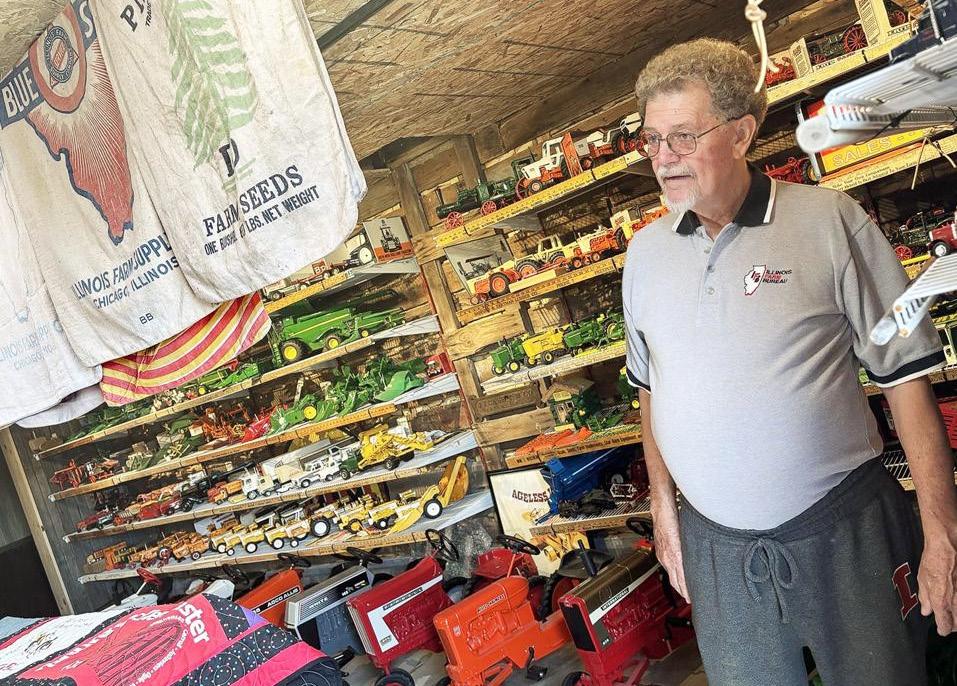
from the former corn crib to a wall shared with the breezeway, where he displays his family’s Illinois Farm Bureau signs dating back to 1922.
Dale also has an extensive collection of farming artifacts that help show the evolution of farming equipment, such as an 1888 corn cutter and repurposed 100-year-old corn crib elevator buckets that show how ear corn was transported from the ground to the top of the elevator.
“I like to tell how far the evolution of
Retired Bureau County farmer Alan Dale stands amongst his thousands of vintage farm toys and other artifacts displayed in a former garage at his Walnut home. For more information about the museum, email Dale at Dalefarms51@ yahoo.com.
Photo by Tammie Sloup
planting and harvesting has come,” Dale said. “People really don’t have any idea what agriculture did before 1980 unless they read about it. So this is one of those stories that I can tell as best I can tell it.”
Granddaughter Gracelynn Dale is grateful for his wisdom and the time spent with her grandpa as she documents all the artifacts.
“It’s one thing to see his collection as a whole, but I’ve had the rare opportunity to see each individual item and
hear stories about the relevance to grandpa’s life as a farmer,” she told FarmWeek. “I like to joke and give grandpa a hard time when he tells me he is headed off to another toy sale, but I cherish these days we get to spend together.”
The former IFB vice president and president, and IFB Young Leader chair, recently invited a group of fellow Young Leaders he served with to the museum. A group has been meeting every year on Super Bowl Sunday for 40 years, and he couldn’t wait to share his years of work on his display.
“I think the word they used most was ‘overwhelmed,’” Dale said. He’s also welcomed a handful of group tours to his museum the past couple years.
Dale’s wife, Chris, jokes that she was fine with his endeavor — until he took the breezeway that was originally intended to be her space.
“I cuss his uncle out every once in a while,” Chris said, laughing. “If it hadn’t been for him ...”
This story was distributed through a cooperative project between Illinois Farm Bureau and the Illinois Press Association. For more food and farming news, visit ILFBpartners.com.
